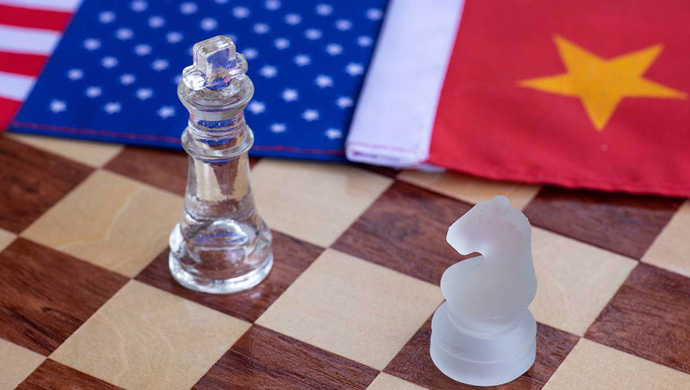
Since the 1990’s, China and the U.S. have had extensive conflicting interests in military and broader security issues. However, if the purpose is to map out a cooperation list, I will venture the following suggestions:
First, intensifying strategic competition has given rise to a shared interest: prevention of military conflict resulting from misjudgment, accident or inadvertent events at the operational level. Such a military conflict runs the risk of escalation to a larger scale and higher intensity.
Now that both countries can little rely on strategic trust to avoid a crisis, they must improve the existing crisis management regimes, including updating the code of behavior in close encounters in the air and at sea, regulating the use of communication channels and clarifying protocols and procedures when emergencies do occur. This may be the most important area in which the two militaries can work together.
Second, given that China and the U.S. have the responsibility of maintaining world peace and regional stability, they must discuss, negotiate and eventually agree upon a relationship of strategic stability. For that purpose, they need to first explore a conceptual construct of what that means — how it draws upon and differs from what the U.S. and Soviet Union had during the Cold War. The U.S.-Soviet strategic stability was based on a balance of nuclear arsenals and focused on “crisis stability” and “arms race stability.” A framework for strategic stability for the U.S. and China might have to be more extensive and inclusive.
Given the nature of China-U.S. military relations, the architecture for strategic stability should not only cover the size and composition of nuclear arsenals and defense/offense balances but should also explore the ways and means of preventing cyberattacks on nuclear facilities and nuclear command, control and communication systems (NC3), as well as assets in space.
Currently, there are studies in academia and the policymaking community in both countries looking at how peaceful coexistence can happen, what military balances would aid stability and what kind of military posture is needed to both satisfy their security requirements and avoid an arms race.
In any case, the Cold War concept of “mutual assured destruction” (MAD) should not be the only option. There have been studies and discussions raising concepts such as “mutual denial” or “mutual vulnerability,” which need further exploration on both sides.
Third, China shares interests with the U.S. in the area of international arms control. U.S. President Joe Biden ranks arms control as a policy priority and extended the New Start Treaty with Russia for another five years immediately after he took office. The Trump administration had tried to force China into disarmament negotiations with Russia, which was neither fair nor practical. China is and will continue to be opposed to such coercive behavior.
However, China and the U.S. have ample room to cooperate in bilateral and multilateral frameworks on arms control, including reducing their reliance nuclear weapons for national security and promoting a political consensus to minimize the utility of nuclear weapons use in the P5 framework. Both countries should call for a joint P5 statement that “Nuclear war cannot be won and should never be fought,” which presidents Reagan and Gorbachev made decades ago.
Considering that President Biden has promised to seek a “sole-purpose” nuclear policy during his presidential campaign, and that China has a long-held “no-first-use” policy, both sides can work together for the adoption of a no first use or sole purpose policy by all nuclear-armed states.
At the same time, both should continue to cooperate on nonproliferation issues, as they did in the past, seek a peaceful solution of the DPRK nuclear issue and keep the Iran nuclear deal (the Joint Comprehensive Plan of Action) intact.
Even when both countries are less inclined to cooperate during a period of heightened strategic competition, nonproliferation remains a common interest and cooperation a necessity for regional and global peace.
Last, China and the U.S. can and should engage each other in setting up standards, rules and norms for emerging technologies involving space, cyber, artificial intelligence and so on — especially on whether or how such technologies should be used for military purposes. Exclusion of each other from this process could have grave consequences.
